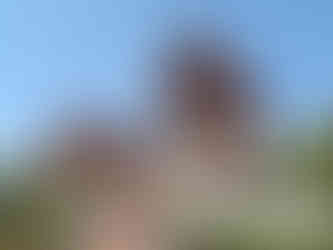Wat Phra Singh - Temple of the Lion
- Shannon
- Sep 30
- 3 min read
Ghosts of Chiang Mai’s Royal Temple
Wat Phra Singh stands as one of Chiang Mai's most iconic and historically rich temples. Founded in 1345 during the reign of Lanna King Phayu, its purpose was to enshrine a famous relic of the Buddha and house the ashes of his late father, King Khamfu. Also known as the Monastery of the Lion Buddha, it is still an active religious centre, attracting hundreds of monks and novices from all over South East Asia.

Adorned with gold leaf and ringed by elephant sculptures, the towering central chedi is Wat Phra Singh’s oldest and most commanding structure, rising 20 metres into the sky. In keeping with ancient Buddhist tradition, sacred relics are placed within such monuments as a symbol of the devotee’s wish for enlightenment. This particular chedi also enshrines the ashes of the fallen King Khamfu, linking spiritual aspiration with royal legacy.
The Lanna-style Viharn Lai Kham was originally built in 1345 and safeguards the highly revered Phra Buddha Sihing statue, also known as the Lion Buddha. Legend claims the idol originated in Sri Lanka and is over 1500 years old, having passed through several ancient kingdoms before finding its home in Chiang Mai. With its intricately carved teakwood interior and golden stenciled murals, the viharn itself is a masterpiece of Northern Thai craftsmanship, making it a spiritual and artistic centerpiece of Wat Phra Singh.

The 16th century Chedi Ku Lais stands quietly behind the Viharn Lai Kham, distinguished by its unique five tiered roof. A narrow tunnel links its inner chamber directly to the viharn, suggesting a once hidden ritual connection between the two structures. During restoration efforts, workers uncovered a trove of long lost treasures and sacred relics within the chedi’s chamber, an unexpected glimpse into the spiritual and historical layers buried deep within temple complex.
These life size statues were created in memory of monks that have passed away
Between the 16th and 18th centuries, Wat Phra Singh experienced a period of decline and neglect during Burmese occupation. Its revival began in the early 19th century under King Kawila, who initiated extensive restoration efforts to return the temple to its former glory. Another major restoration took place in the 1920s, led by the revered monk Khru Srivichai Ba, whose influence helped reinstate the temple’s spiritual prominence. In recognition of its historical and religious importance, King Rama VIII elevated Wat Phra Singh to the status of a Royal Temple of the First Grade in 1935.

The famous monk Khru Srivichai Ba initiated extensive renovations during the 1920's
🗺️ Location
2 Sam Lan Road, Phra Sing Subdistrict, Mueang Chiang Mai District, Chiang Mai, Thailand
🚆 How to get there
Wat Phra Singh - The Temple of the Lion is centrally located within Chiang Mai’s Old City walls, just a four-minute walk from Suan Dok Gate (Pratu Suan Dok) and around ten minutes from Wat Chedi Luang. Its prime location makes it easy to reach on foot if you’re staying nearby, or by songthaew (shared red truck) for about 20 - 30 THB, tuk-tuk for roughly 60 - 100 THB, or Grab for 70 - 120 THB, depending on distance and traffic. The temple’s main entrance sits on Ratchadamnoen Road, the same route as the famous Sunday Walking Street Market, making it a convenient stop for both sightseeing and local exploration.
⭐ Attraction Info
The temple complex is open daily between 6am - 8pm and costs 20THB to enter. If you arrive without appropriate attire, you can hire a sarong at the entrance for an additional 10THB. Visitors are expected to respect local customs and traditions, which includes dressing modestly by covering shoulders and knees, and maintaining a calm, respectful presence within the grounds. Shoes must always be removed before stepping inside any of the temple buildings, and it’s considered highly disrespectful to walk directly in front of anyone praying or meditating. Taking a moment to observe these practices not only shows cultural awareness but also enhances the peaceful, spiritual experience of visiting Wat Phra Singh.
Thanks for reading about Wat Phra Singh - Temple of the Lion. Check out more awesome destinations here!























